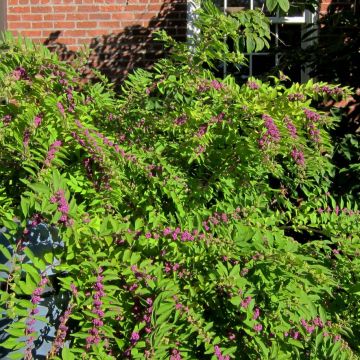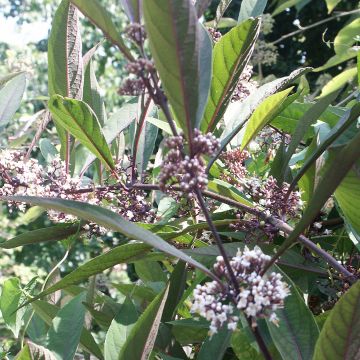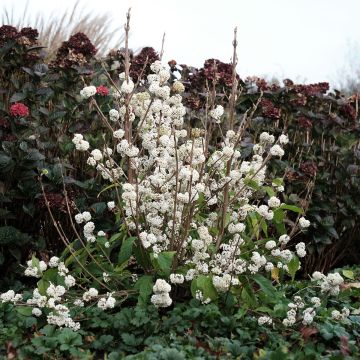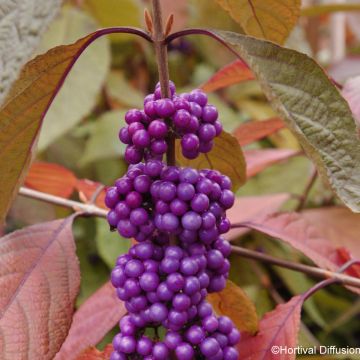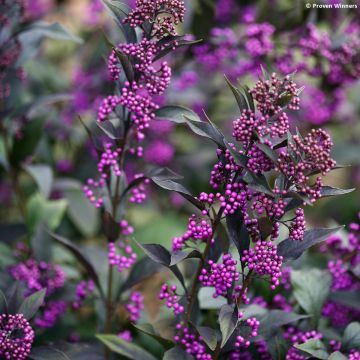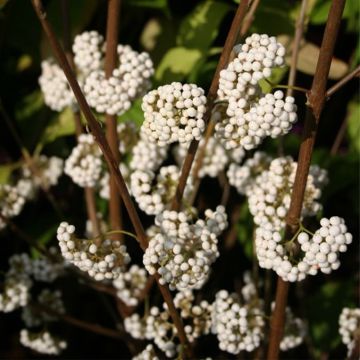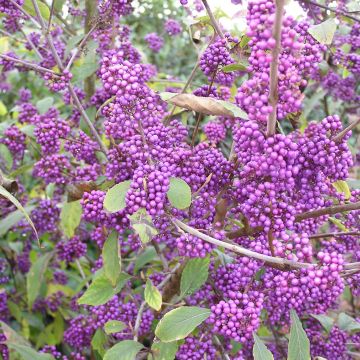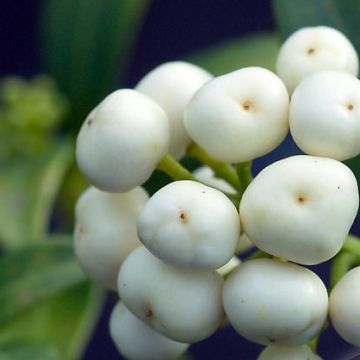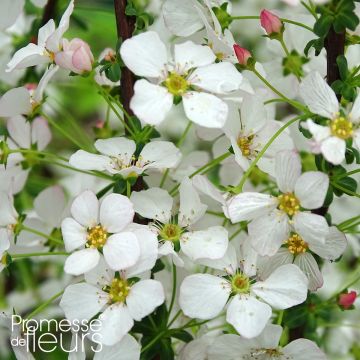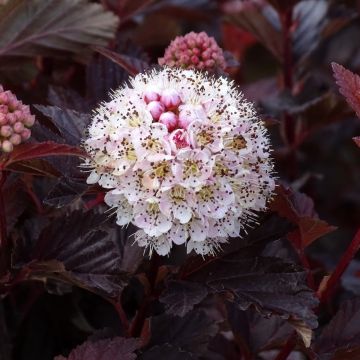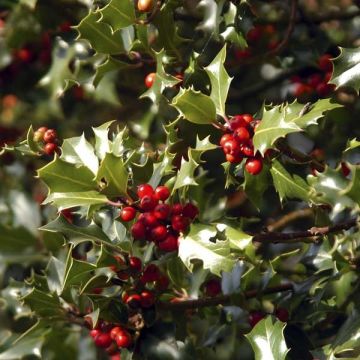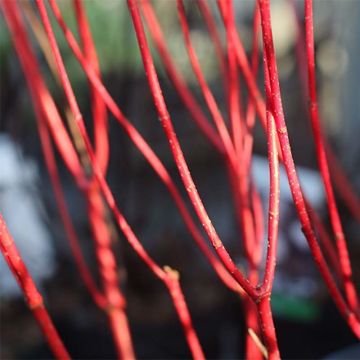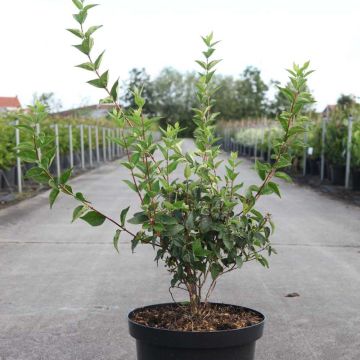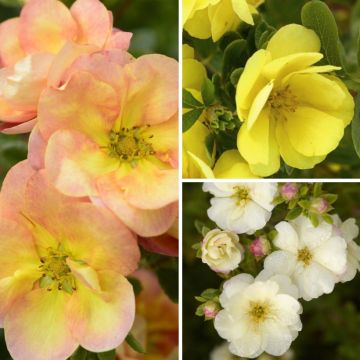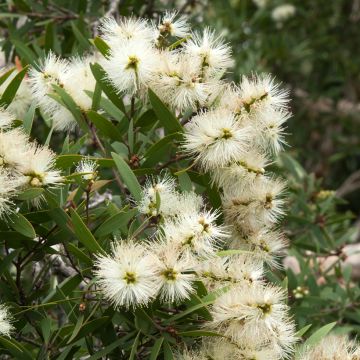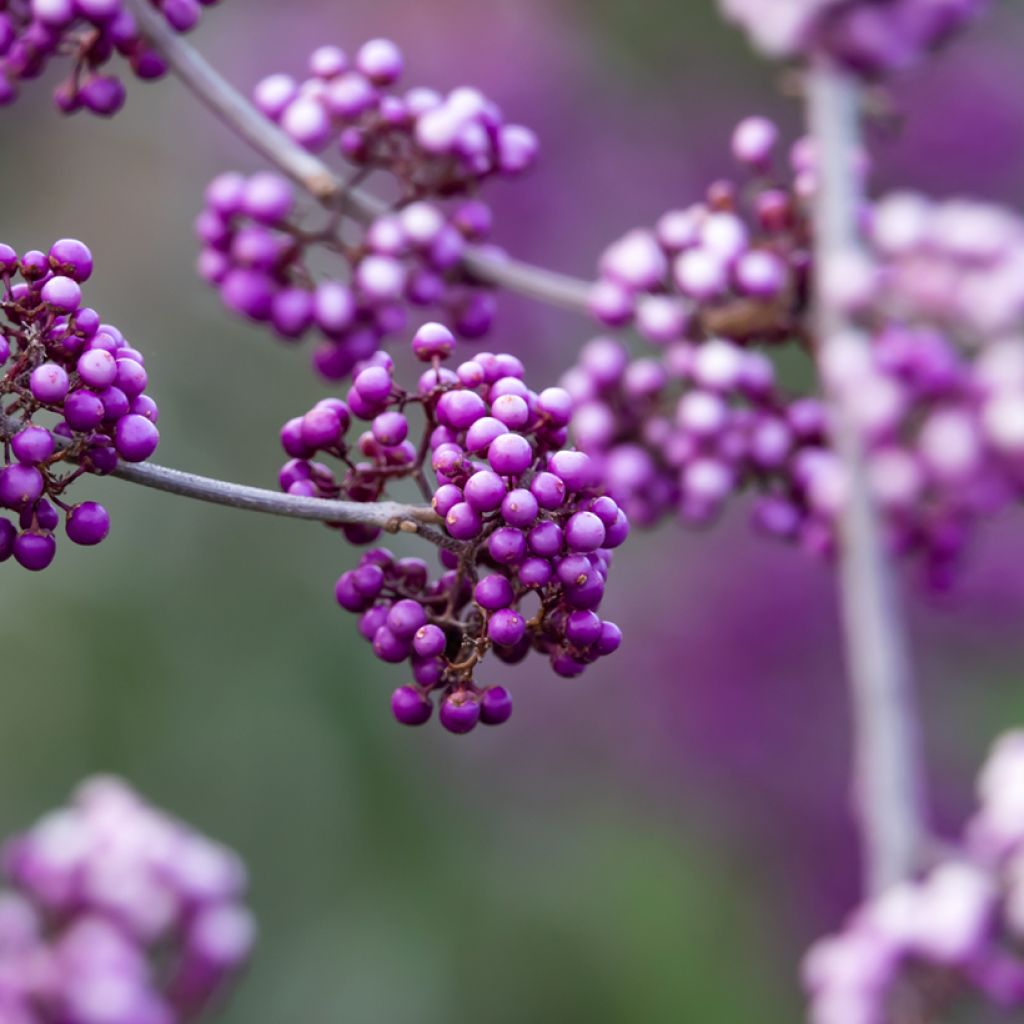

Callicarpa bodinieri Liebespaar - Arbuste aux bonbons
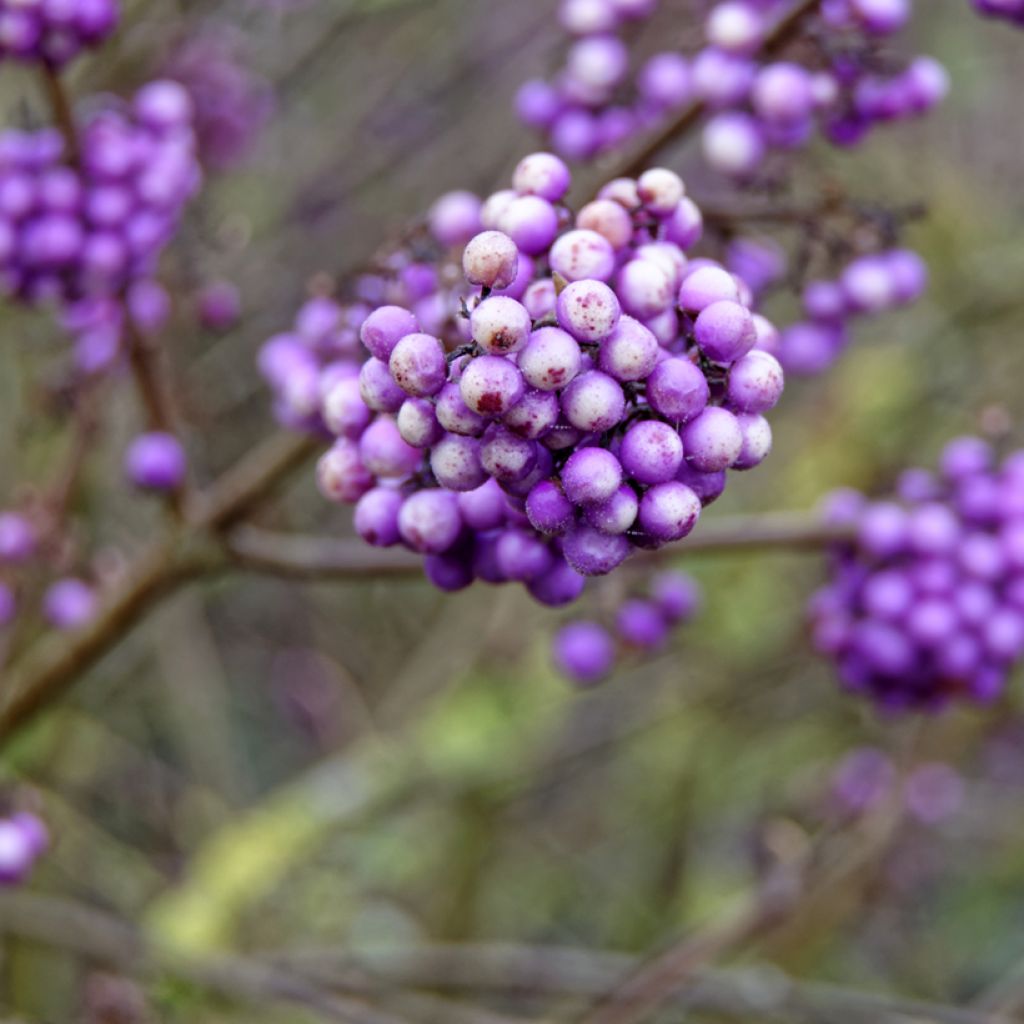

Callicarpa bodinieri Liebespaar - Arbuste aux bonbons
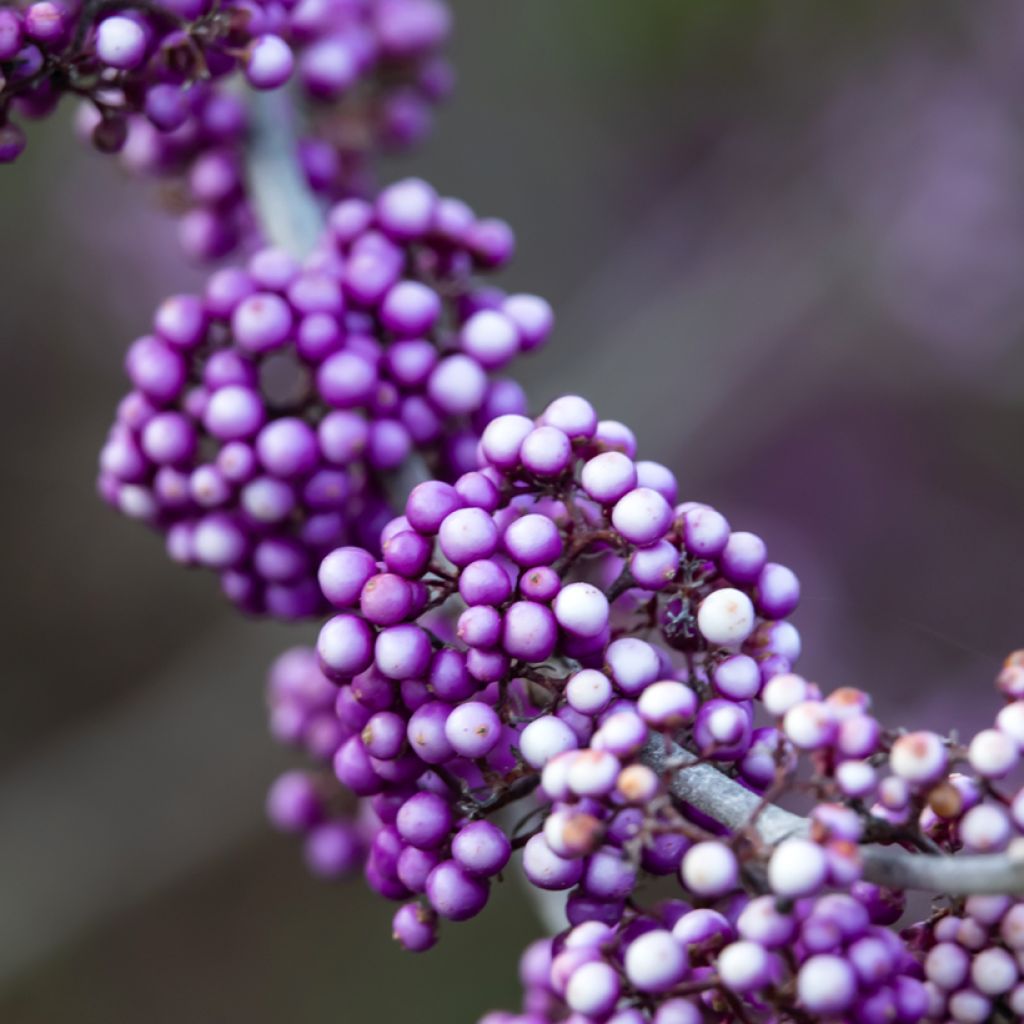

Callicarpa bodinieri Liebespaar - Arbuste aux bonbons
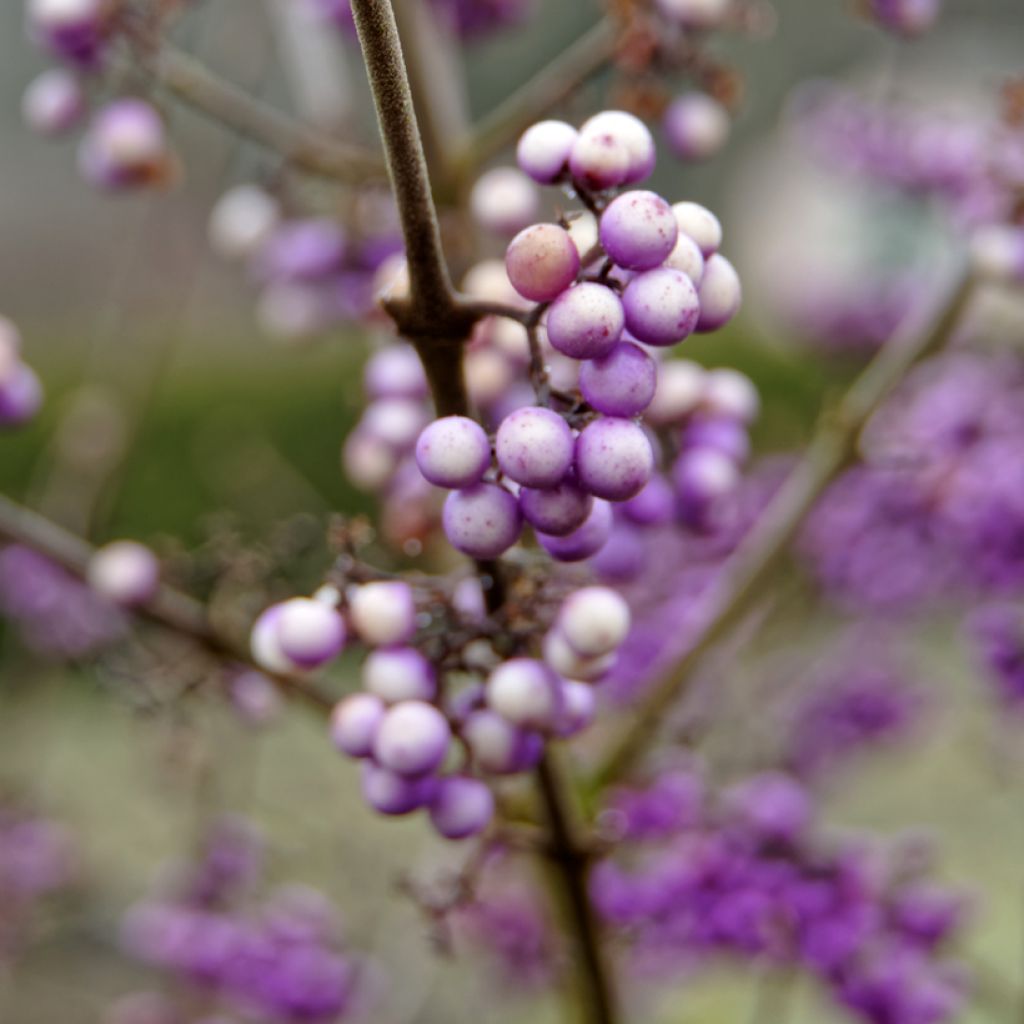

Callicarpa bodinieri Liebespaar - Arbuste aux bonbons
Callicarpa bodinieri Liebespaar
Callicarpa x bodinieri Liebespaar
Bodinier's Beautyberry, Beautyberry
This item cannot be shipped to the selected country
Delivery charge from €5.90
Delivery to Corse prohibited
More information
Schedule delivery date,
and select date in basket
This plant carries a 24 months recovery warranty
More information
We guarantee the quality of our plants for a full growing cycle, and will replace at our expense any plant that fails to recover under normal climatic and planting conditions.
From €5.90 for pickup delivery and €6.90 for home delivery
Express home delivery from €8.90.
Delivery to Corse prohibited: UE law prohibits the import of this plant from mainland France to Corse as part of the fight against Xylella fastidiosa. Please accept our sincere apologies.
More information
Does this plant fit my garden?
Set up your Plantfit profile →
Description
The Callicarpa bodinieri Liebespaar is a horticultural composition combining 2 different varieties of Callicarpa to enjoy 2 colours of fruiting instead of just one. The 2 intermingled bushes thus produce purple and white berries, remaining during part of the winter, thus decorating the garden during a season that is often a bit sad. The foliage also displays beautiful autumnal colours, adding an additional attraction. Easy to grow and very hardy, Callicarpas thrive in all types of ordinary soils, even limestone, provided they are not too dry in summer.
The Callicarpa bodinieri, once classified among the Verbenaceae (like Verbena or Lantana), now belongs to the family of Lamiaceae. This large plant group includes more than 200 genera and totals about 6,000 species. The Callicarpa bodinieri comes to us from China, and is affectionately called the candy bush due to its profusion of violet, appetising but inedible berries. Like the Callicarpa japonica, it is native to China, Korea, and as its name indicates, Japan. It also produces a profusion of highly decorative purplish fruits. These two species have given rise to cultivars that are more frequently planted.
The 'Profusion' variety is an improvement of the Callicarpa bodinieri, remarkable for the multitude of purple fruits, about 4 mm (0.2 in) in diameter, produced from October. These berries result from the summer flowering (June-July) in the form of small pinkish purple flowers, with yellow, nectar-producing stamens, grouped in cymes measuring 3 to 4 cm (1.2 to 1.6 in) in diameter. 'Profusion' also offers generous autumnal colouration, in shades of yellow-orange turning deep red-purple.
The 'Leucocarpa' cultivar is a variety of Callicarpa japonica with white fruits. Resembling C. bodinieri, this medium-sized shrub blooms later, from August to September, emitting small white-pink flowers grouped in cymes measuring 3 cm (1.2 in) in diameter. The white berries that follow in autumn remain on the plant throughout winter. Before that, the deciduous foliage will take on a lovely bronze-yellow colour in autumn before falling.
'Liebespaar' (translated from German as "loving couple") combines these 2 varieties in the same pot, thus combining their respective qualities. The whole will form a medium-sized bush, about 2 m (6 ft 7 in) tall and 1.50 m (4 ft 11 in) wide, with a relatively upright and bushy habit. Very hardy (down to -20°C (-4 °F)), 'Liebespaar' is a charming decorative blend for much of the year.
'Liebespaar' is a plant composition that will find its place in many gardens. While its pleasant flowering is nothing exceptional, its autumn colours and especially its bicoloured fruiting will be a visual focal point in the garden. Essential for autumn and winter, you can associate Liebespaar with other shrubs of interest in spring and summer. Plant it in a varied bed alongside other easy plants like Forsythia, whose golden yellow flowers will enchant the garden from March. A white Spirea, such as Spiraea arguta, will take over with its branches covered in small immaculate flowers in April and May. Then in May and June, the Deutzia elegantissima Rosealind will be covered in a cloud of small pink flowers.
Report an error about the product description
Plant habit
Flowering
Foliage
Botanical data
Callicarpa
x bodinieri
Liebespaar
Lamiaceae
Bodinier's Beautyberry, Beautyberry
Cultivar or hybrid
Other Callicarpa
Planting and care
The Callicarpa bodinieri Liebespaar is a pair of easy-to-grow bush plants that can adapt to most soils, except dry ones, during summer. To help them grow well, follow these steps: dig a hole that measures 50 cm (19.7 in) in all directions, and if your soil is sandy, add planting compost to increase water retention. Mix the compost and soil. Soak the root ball in water for 15 to 20 minutes, plant it in the hole, and water it generously.
Choose a spot that's sunny or slightly shaded. The Callicarpa bodinieri is tough and can handle temperatures down to approximately -20 °C. If some young branches freeze, prune them later, and they will grow back from the base.
Planting period
Intended location
Care
This item has not been reviewed yet - be the first to leave a review about it.
Hedge shrubs
Haven't found what you were looking for?
Hardiness is the lowest winter temperature a plant can endure without suffering serious damage or even dying. However, hardiness is affected by location (a sheltered area, such as a patio), protection (winter cover) and soil type (hardiness is improved by well-drained soil).

Photo Sharing Terms & Conditions
In order to encourage gardeners to interact and share their experiences, Promesse de fleurs offers various media enabling content to be uploaded onto its Site - in particular via the ‘Photo sharing’ module.
The User agrees to refrain from:
- Posting any content that is illegal, prejudicial, insulting, racist, inciteful to hatred, revisionist, contrary to public decency, that infringes on privacy or on the privacy rights of third parties, in particular the publicity rights of persons and goods, intellectual property rights, or the right to privacy.
- Submitting content on behalf of a third party;
- Impersonate the identity of a third party and/or publish any personal information about a third party;
In general, the User undertakes to refrain from any unethical behaviour.
All Content (in particular text, comments, files, images, photos, videos, creative works, etc.), which may be subject to property or intellectual property rights, image or other private rights, shall remain the property of the User, subject to the limited rights granted by the terms of the licence granted by Promesse de fleurs as stated below. Users are at liberty to publish or not to publish such Content on the Site, notably via the ‘Photo Sharing’ facility, and accept that this Content shall be made public and freely accessible, notably on the Internet.
Users further acknowledge, undertake to have ,and guarantee that they hold all necessary rights and permissions to publish such material on the Site, in particular with regard to the legislation in force pertaining to any privacy, property, intellectual property, image, or contractual rights, or rights of any other nature. By publishing such Content on the Site, Users acknowledge accepting full liability as publishers of the Content within the meaning of the law, and grant Promesse de fleurs, free of charge, an inclusive, worldwide licence for the said Content for the entire duration of its publication, including all reproduction, representation, up/downloading, displaying, performing, transmission, and storage rights.
Users also grant permission for their name to be linked to the Content and accept that this link may not always be made available.
By engaging in posting material, Users consent to their Content becoming automatically accessible on the Internet, in particular on other sites and/or blogs and/or web pages of the Promesse de fleurs site, including in particular social pages and the Promesse de fleurs catalogue.
Users may secure the removal of entrusted content free of charge by issuing a simple request via our contact form.
The flowering period indicated on our website applies to countries and regions located in USDA zone 8 (France, the United Kingdom, Ireland, the Netherlands, etc.)
It will vary according to where you live:
- In zones 9 to 10 (Italy, Spain, Greece, etc.), flowering will occur about 2 to 4 weeks earlier.
- In zones 6 to 7 (Germany, Poland, Slovenia, and lower mountainous regions), flowering will be delayed by 2 to 3 weeks.
- In zone 5 (Central Europe, Scandinavia), blooming will be delayed by 3 to 5 weeks.
In temperate climates, pruning of spring-flowering shrubs (forsythia, spireas, etc.) should be done just after flowering.
Pruning of summer-flowering shrubs (Indian Lilac, Perovskia, etc.) can be done in winter or spring.
In cold regions as well as with frost-sensitive plants, avoid pruning too early when severe frosts may still occur.
The planting period indicated on our website applies to countries and regions located in USDA zone 8 (France, United Kingdom, Ireland, Netherlands).
It will vary according to where you live:
- In Mediterranean zones (Marseille, Madrid, Milan, etc.), autumn and winter are the best planting periods.
- In continental zones (Strasbourg, Munich, Vienna, etc.), delay planting by 2 to 3 weeks in spring and bring it forward by 2 to 4 weeks in autumn.
- In mountainous regions (the Alps, Pyrenees, Carpathians, etc.), it is best to plant in late spring (May-June) or late summer (August-September).
The harvesting period indicated on our website applies to countries and regions in USDA zone 8 (France, England, Ireland, the Netherlands).
In colder areas (Scandinavia, Poland, Austria...) fruit and vegetable harvests are likely to be delayed by 3-4 weeks.
In warmer areas (Italy, Spain, Greece, etc.), harvesting will probably take place earlier, depending on weather conditions.
The sowing periods indicated on our website apply to countries and regions within USDA Zone 8 (France, UK, Ireland, Netherlands).
In colder areas (Scandinavia, Poland, Austria...), delay any outdoor sowing by 3-4 weeks, or sow under glass.
In warmer climes (Italy, Spain, Greece, etc.), bring outdoor sowing forward by a few weeks.


































